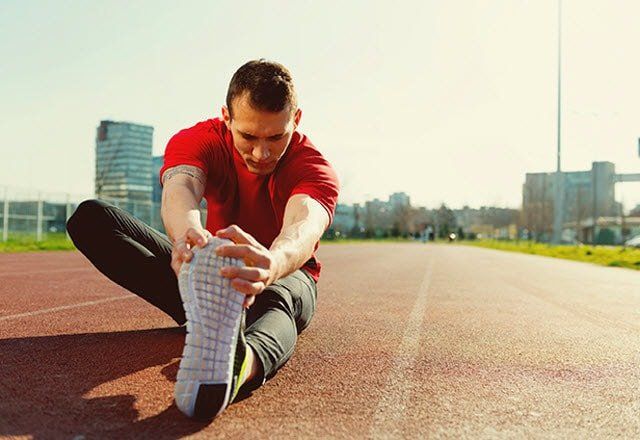
Sports injuries can be frustrating and put athletes’ performance at risk. It’s essential to prevent injuries to maintain peak performance and promote longevity in sports. By following these ten tips, athletes can stay injury-free and improve their overall athleticism.
1. Warm Up and Cool Down Properly
One of the most crucial steps to prevent sports injuries is to warm up before exercising or competing. Warming up helps to prepare the body for physical activity and increases blood flow to the muscles. It is suggested to engage in dynamic stretches and light cardio exercises to warm up the muscles adequately.
Cooling down is equally important to gradually decrease heart rate and bring the body back to a resting state. Incorporating static stretches during the cool-down phase helps improve flexibility and reduce the risk of muscle soreness and injury.
2. Focus on Strength and Conditioning
Improving strength and conditioning is fundamental to enhancing performance and reducing the likelihood of injuries. Building strength in the muscles surrounding joints helps provide stability and prevent strains and sprains.
It’s recommended to incorporate resistance training into your workout routine, ensuring you target all major muscle groups. Additionally, incorporating functional movements and exercises that mimic sport-specific motions can help improve overall athleticism.
3. Use Proper Technique
Technique plays a critical role in preventing sports injuries. Mastering the correct form and technique for specific movements reduces stress on joints and muscles, minimizing the risk of injury.
Seeking guidance from qualified coaches or trainers who can provide proper technique instruction is essential. Regularly reviewing and refining technique can help athletes maintain a safe and effective performance.
4. Wear Appropriate Protective Gear
Wearing the right protective gear is essential in preventing injuries, especially in contact sports. Depending on the sport, gear such as helmets, pads, mouthguards, and goggles should be worn to reduce the risk of head, body, and eye injuries.
Investing in quality gear that fits properly and meets safety standards is crucial. Regularly inspecting and maintaining the gear ensures it provides optimal protection.
5. Gradually Increase Intensity and Duration of Training
When starting a new sport or exercise regimen, it’s important to gradually increase the intensity and duration of training. Pushing too hard or progressing too quickly can lead to overuse injuries and burnout.
Athletes should focus on gradually increasing the volume and intensity of their workouts over time, allowing their bodies to adapt and minimize the risk of injury. Proper periodization techniques can help prevent overtraining and optimize performance.
6. Pay Attention to Rest and Recovery
Rest and recovery are often overlooked but vital aspects of injury prevention and athletic performance. Giving the body adequate time to rest and recover between training sessions allows for proper healing and adaptation to occur.
Ensuring quality sleep, incorporating active recovery techniques such as foam rolling and stretching, and scheduling regular rest days are essential for minimizing the risk of injury and enhancing overall athleticism.
7. Maintain a Balanced Diet
A balanced diet plays an important role in supporting overall health and reducing the risk of injuries. Consuming a variety of nutrient-rich foods fuels the body and provides the necessary vitamins and minerals required for optimal function.
Ensuring adequate protein intake helps with muscle repair and recovery. Staying hydrated is also crucial to prevent muscle cramps and dehydration-related injuries.
8. Listen to Your Body
One of the most important tips to prevent sports injuries is to listen to your body. Pay attention to any pain, discomfort, or fatigue, as these could be signs of overuse or underlying issues.
If experiencing persistent pain or unusual symptoms, it’s crucial to seek medical attention promptly. Ignoring warning signs and pushing through pain can worsen injuries and prolong recovery time.
9. Cross-Train and Vary Your Workouts
Engaging in a variety of activities and cross-training is beneficial for preventing injuries and enhancing overall athleticism. Cross-training allows athletes to work different muscle groups, reducing the risk of overuse injuries caused by repetitive motions.
Incorporating different types of exercises and sports into your routine also helps to improve overall fitness, agility, and coordination.
10. Get Regular Check-ups and Assessments
Scheduling regular check-ups and assessments with healthcare professionals, such as sports physicians, physiotherapists, and strength coaches, is essential for injury prevention. These professionals can identify any potential issues and provide appropriate guidance and treatment to maintain optimal physical condition.
Regular assessments can help monitor progress, identify imbalances or weaknesses, and create personalized plans to enhance athleticism and prevent injuries.
By following these ten tips, athletes can significantly reduce the risk of sports injuries and improve their overall athletic performance. Prioritizing injury prevention not only helps athletes stay active but also ensures long-term success in their respective sports.